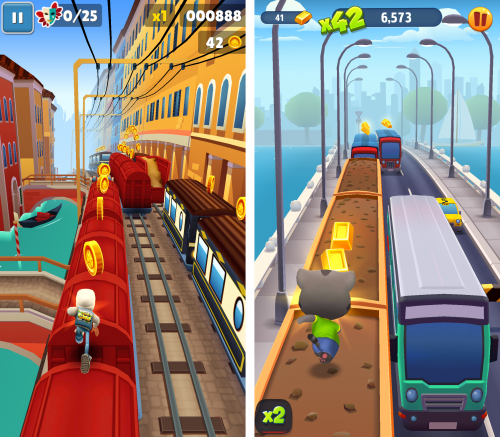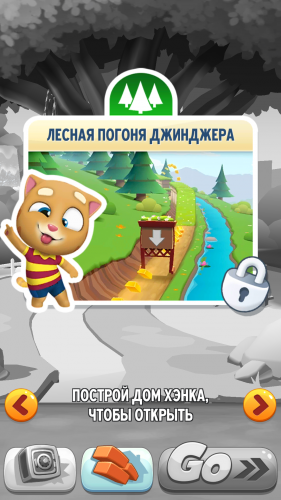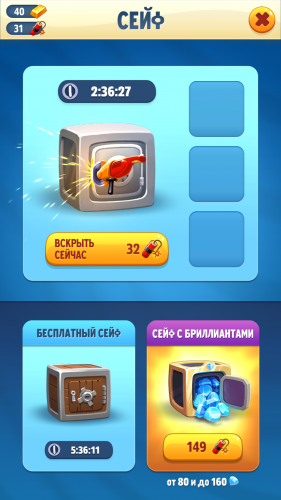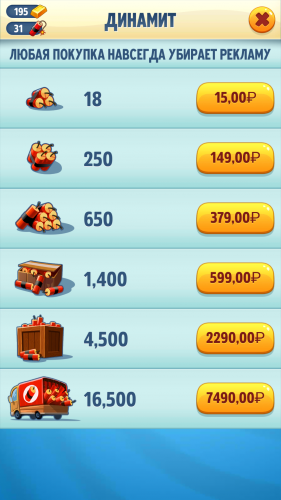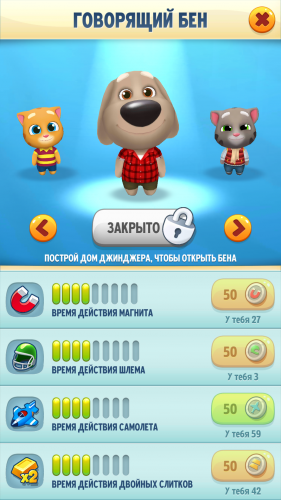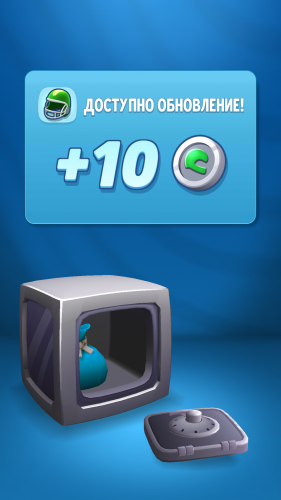The other day there was a worldwide release of a new game from Outfit7 – an endless runner in the extremely popular universe of the Talking Tom series. About the project – in our analysis.
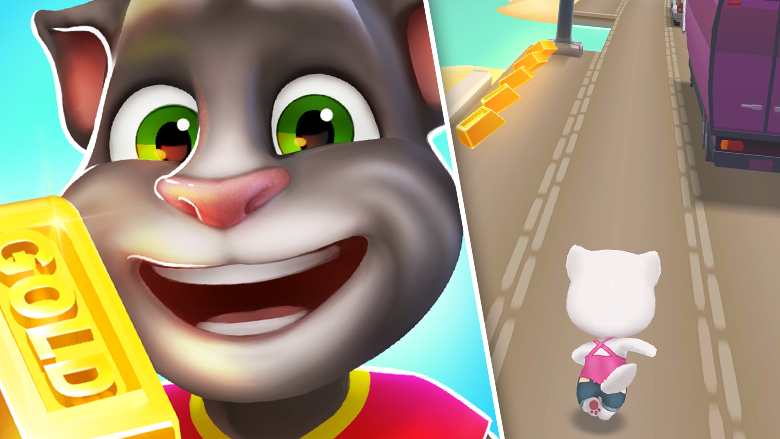
The novelty, as we wrote yesterday in “One line”, is a clone of Subway Surfers with strapping and innovations.
Why a clone? The developers of Talking Tom Gold Run not only took the Subway Surfers three-rail basis as a basis, but also copied the visual style, the type of obstacles and bonuses on the playing field.
According to the clothes we meet …
The visual part of the game Sybo and Kiloo organically formed the universe of Talking Tom. Graphically, Gold Run looks more advantageous today. Heroes – cats and dogs – are more charismatic than Subway Surfers characters. But here you should keep in mind – it is on their images that the Talking Tom series has gained 4.5 billion downloads.
Subway Surfers and Talking Tom Gold Run
In Gold Run, numerous little things have been worked out very well:
- cars coming towards them are flashing their headlights;
- the sound becomes muffled when the hero puts on a helmet;
- for each action in the game there are several animations (only four jumps, and how many “deaths”).
To be fair: there are almost no unique animations for the characters in the game. Let me remind you, in Subway Surfers, at least one was assigned to each hero on the selection screen. In Gold Run, boys have one set of animations for everyone, girls have another (when choosing a character).
Basic mechanics
Innovations in the basic gameplay in Gold Run compared to Subway Surfers are insignificant and, rather, with a minus sign.
- An important motivating feature of Subway Surfers was the constant demonstration of friends’ records during the run. Gold Run has only your own record showing so far, despite the presence of synchronization with Facebook (perhaps the fact is that my friends don’t play the game, but then it would make sense to introduce invented characters with records, as it is done in Nonstop Knight).
- The number of blanks from which the track is assembled is small (depends on the number of open locations, but there are still few of them).
- Subway Surfers memorized an additional gesture (a quick double swipe in different directions). This made it possible to make short “bundles” at high speeds. There is no such thing in Gold Run (UPDATE FROM 07/18/2016: in fact, as it turned out, there is such a thing here, only because of the long animations, it rather hinders than helps).
- According to subjective feelings, the character reacts to swipes a little slower.
- There are no daily tasks. In the original, it was a good-working incentive to return to the game.
- There are no power-ups-consumables. They played an important role in Subway Surfers, they were both one of the points of monetization and an opportunity to set new records.
The ambiguous moment is the slow “swing”. Even with a high multiplier, the character runs slowly for a long stretch of the route. But this is probably an additional funnel. In order not to re-pass a large segment of the route on the way to the record made, the user can pay a relatively large amount in one of the game currencies (Subway Surfers had an analogue as a power-up).
As a good find, I will note a short-term slowdown of the game after leaving the pause. The hero moves for a couple of seconds as if in slow motion. Allows you to return to an interrupted session less painlessly.
It is important that Outfit7 kept the multiplier in the game.
At one time, an important (and rarely quoted) invention of Subway Surfers was the points multiplier. The number of points collected in the game depended not only on the distance made, but also on the multiplier. The larger the multiplier, the more points the player gets for each conditional step.
Due to this, not only a skill was required from the player to gain a large number of points. He had to play a lot of the project, go through a lot of missions.
In the game Sybo and Kiloo, the multiplier was given for completing a block of missions. Each set consisted of three tasks (for example, to do five somersaults).
The multiplier is saved in Gold Run, but it is issued not for tasks that do not exist, but for upgrading buildings.
Strapping
The most interesting innovations of Gold Run relate to strapping and monetization. Let’s talk about them.
As we have already noted, the multiplier was left in the game. It is still a reflection of the player’s progress. Only if earlier progress was reduced to the fulfillment of mission packs, now to the construction of buildings.
In general, this creates a simple basic loop within the game.

What kind of buildings?
The game has locations. At each location from two or more buildings. Each building can be pumped five times. After the maximum pumping of all buildings, the next location opens. The location gives access not only to new pieces of the game track, but also to a new hero with a unique appearance and characteristics.
The upgrade of buildings is made for two currencies – gold bars (soft currency obtained on the tracks) and diamonds (another soft currency that the player receives from the safes).
You can see which locations and heroes are in the game right away. But you can’t get access to anyone right away. Only if all locations are built up to the maximum.
The rebuilding of the location, new characters and tracks are the main motivator to play Gold Run.
But, as it seems to me, insufficient. You can’t share progress in the game, you can’t see what your friend has built, and so on. This reduces interest.
Currencies
The main soft game currency is bullion. As I have already noted, their main source is highways. You can spend them only on buildings and acceleration at the beginning of the session.
The second soft currency is diamonds. They are spent only on buildings. The method of their extraction is more complicated. Money can’t buy them. The player gets them from the safes. The latter are occasionally found on the tracks. How many diamonds will fall from the safe – and whether they will be there at all – is an open question. The safe, in fact, is a gacha.
It is impossible to open safes immediately, as well as to save in unlimited quantities (maximum: 4 earned on the highway, 1 free, 1 for hard currency). Outfit7 borrowed this moment from Clash Royale. Safes open for a long time – from 3 hours.
Why do I think it’s long?
If we were talking about cards (perhaps those that do not exist or that will strengthen the deck or simply merge in the clan), the safe was perceived as a delayed reward.
Here we are waiting for a small amount of game currency from the safes. The negative perception of postponement is much higher. But this is a subjective moment. Perhaps, on the contrary, we will witness a significant increase in sales: safes can be blown up for hard currency (more on it below)!
Why did they introduce safes and diamonds?
Gacha and deferred access to it greatly reduce the speed of content consumption, and at the same time stimulate IAP.
Pumping those buildings that require gold is carried out quickly. Pumping buildings that require diamonds, on the contrary, is slow. The reasons are obvious: there are few diamonds pouring out of safes, upgrades require a lot of diamonds, safes open for a long time. All this constantly encourages the purchase of dynamite.
Dynamite is the hard currency in the game. Only it can be purchased for real money. Dynamite is spent on respawn, instant opening of safes, a safe with a guaranteed number of diamonds, as well as the purchase of the necessary amount of gold for construction.
And yes, with its help, you can quickly “eat” content, but the accidental issuance of diamonds from safes slows down this business.
The following is important here: previously, such mechanisms were not used in casual games (postponement and gacha from a reward for passing to slow down content consumption). In this aspect, Talking Tom Gold Run is a pioneer.
But there is a subjective moment: because of these mechanics, the game gives the impression of a project with “screwed nuts”.
Outfit7 solved this problem in a traditional way for itself.
Advertisement
Gold, diamonds, dynamite and resources for pumping characters (about which at the very end) it is fashionable to earn with the help of video ads. No restrictions. If in many other projects with a reward for views, the number of views is limited, in Gold Run, at first glance, it is not. At least I ran 8 videos in a row and could run the 9th one.
The reward is very small, but to collect the missing diamonds for the upgrade of the construction with its help is a working option. Get ready to watch the same videos for hours.
The presence of video ads, available an unlimited number of times, removes the feeling of “screwing up”.
Plus, there is an offer wall in the game. It brings very ridiculous amounts of gold by the standards of the game economy.
Leveling up heroes
The game has power-ups. The basic game cycle is not included.
Power-ups are boosters scattered along the tracks that instantly trigger, giving, as a rule, the opportunity to collect a little more gold at the level than usual. They don’t last long. A few seconds.
Power-ups in Gold Run duplicate similar ones from Subway Surfers: a magnet, a helmet (insures against blows, an analogue of a skate), an airplane (an analogue of a rocket pack) and a doubling of coins. In Gold Run, power-ups are presented as characteristics of heroes that can be pumped.
The heroes in the game differ in maximum characteristics. For example, Tom can pump a magnet for 14 divisions, and Angela only for 4 divisions. Pumping is carried out for tokens unique to each characteristic.
Since pumping each characteristic affects the speed of gold recruitment, it is clear that you also have to hunt for tokens in the game. Only, like diamonds, there are always not enough of them. But they do not significantly affect the gameplay (unlike Subway Surfers).
Conclusion
Outfit7 is not the first time trying to enter the gaming segment – pet projects relate to games only formally. But so far it has not been very successful in terms of results. Last year’s PvP bubble Mars Pop was a great game, but, as we predicted, it did not go to the casual audience, who did not understand the charm of synchronous multiplayer. How much more successful will Gold Run be in its results?
It all depends on what the developers expect from the project – downloads or top positions in cash tops. Given that the brand is primarily focused on children, as well as a strong emphasis on advertising, we tend to the former.
Runners are very viral projects that generate downloads well. The main hits of this genre – Temple Run and Subway Surfers – have long scored a billion downloads. And the latter is the most downloaded Google Play game and one of the most downloaded on the App Store.
So if the company had a desire to launch a project that could make a significant contribution to the total number of downloads already available to Talking Tom and Co, then the genre and the basis were chosen successfully.
Personally, it will be interesting for me to follow the project because of IAP monetization and safes. If Outfit7’s innovative approach to the casual market raises the game in the box office top, its experience will make sense to repeat.
Are you waiting for the analysis of any particular game? Write in the comments!

